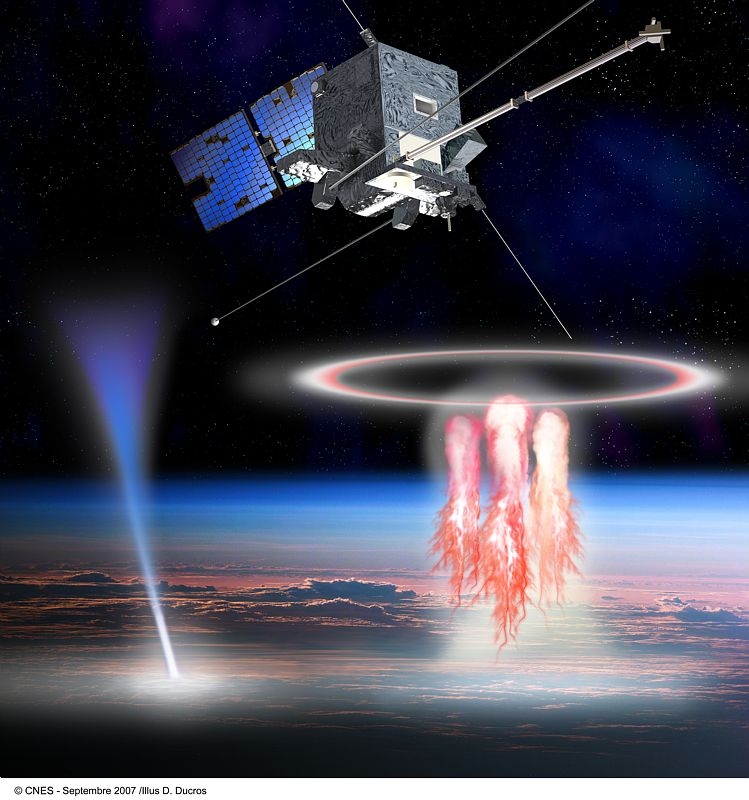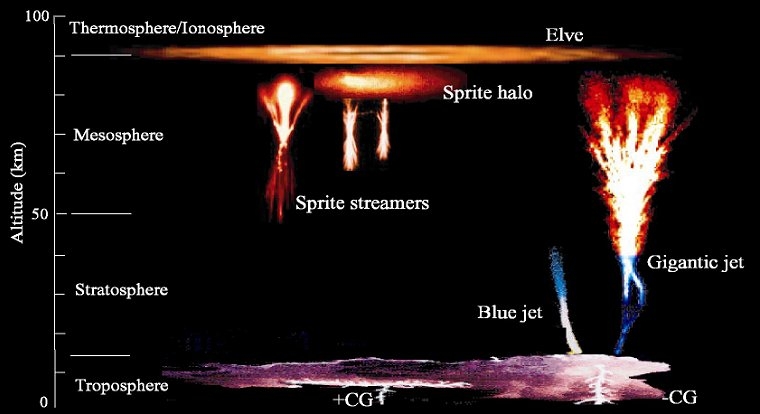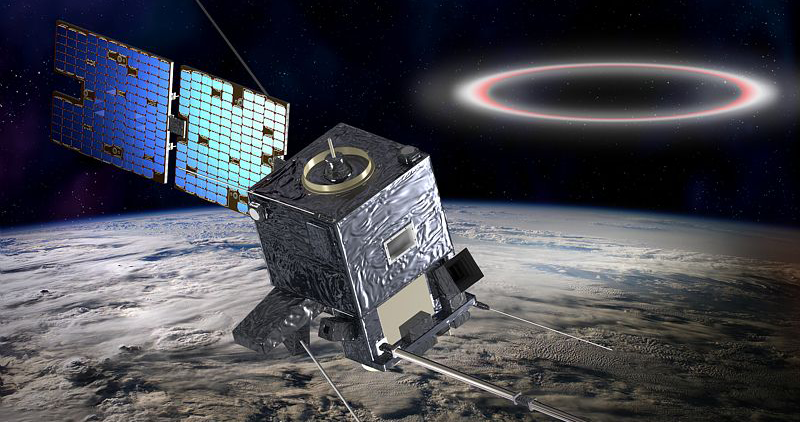1st March 2011
Sprites above the clouds

The TARANIS mission takes its names from the Celtic god of thunder—and for good reason.
The phenomena this satellite will be studying are like gigantic lightning flashes that propagate from the tops of clouds into the upper atmosphere. They occur above very large thunderstorms, especially in the intertropical belt.
Transient luminous events (TLEs)—variously called elves, sprites or blue jets—are very short-lived phenomena that emit intense radiation, chiefly X- and gamma rays, into space.
Orbiting at an altitude of 700 km, the TARANIS satellite will be ideally placed to observe these phenomena and how they affect the upper layers of the atmosphere, as well as the weather.
Impact on transmissions

The events that TARANIS will observe are accompanied by terrestrial gamma-ray flashes (TGFs) similar to those seen in nuclear blasts.
These high-energy phenomena can alter conditions in the ionosphere, upwards of 50 km above Earth’s surface, directly affecting propagation of certain civil and military radiofrequencies.

The first-ever space mission dedicated to studying these phenomena, TARANIS is eagerly awaited by a broad global scientific community, with contributors in the United States, Japan, Poland and the Czech Republic.
After receiving the go-ahead from the CNES Board of Directors on 9 December 2010, the project team is aiming to have the system ready for launch by end 2014.
The satellite is scheduled to launch from Europe’s spaceport in Kourou, French Guiana, most likely atop a Soyuz launcher.